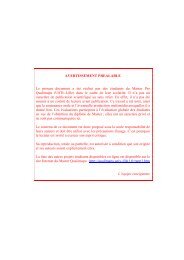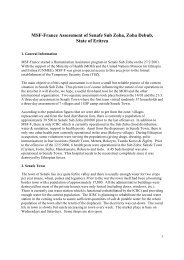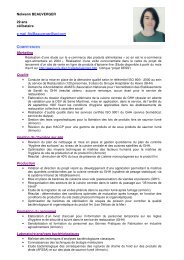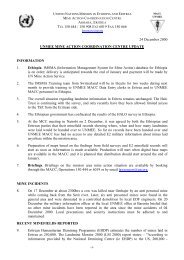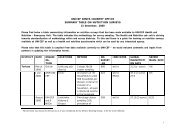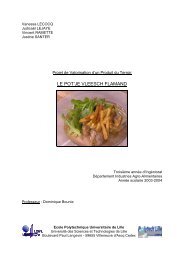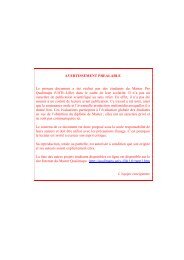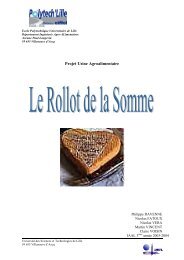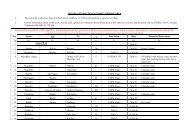ANTHROPOMETRIC NUTRITIONAL SURVEY - PFEDA / Page d ...
ANTHROPOMETRIC NUTRITIONAL SURVEY - PFEDA / Page d ...
ANTHROPOMETRIC NUTRITIONAL SURVEY - PFEDA / Page d ...
Create successful ePaper yourself
Turn your PDF publications into a flip-book with our unique Google optimized e-Paper software.
Most of the population assessed did not have livestock on the ground, leaving more than 90% of the<br />
people with no access to milk or any form of meat foods. 13.7% of people surveyed were involved in<br />
various forms of trade, enabling them to cope to some degree with the current food insecurity.<br />
RECOMMENDATIONS<br />
Nutrition<br />
• It is essential that the mobile supplementary feeding programme is continued to prevent a general<br />
deterioration in the situation with many more children becoming severely malnourished.<br />
• Extensive household visits should be carried out by the nutrition extension workers to increase the<br />
coverage of the supplementary feeding beneficiaries. Those eligible for the therapeutic feeding<br />
centre should be given the opportunity to enroll into the programme.<br />
• It will be important to conduct a follow up nutritional survey in the location preferably after a 4<br />
month period so as to evaluate the impact of the on going interventions. Tearfund should also carry<br />
out more longitudinal surveying across a smaller number of households in each supplementary<br />
feeding site per week. This will enable nutrition extension workers to gain a micro understanding<br />
of changing food and health patterns rather then sporadic nutritional snapshots.<br />
• Health education, nutrition and food security lessons should be conducted alongside the feeding<br />
sessions to ensure that the chronic situation in the location is addressed in the long run.<br />
• Tearfund should continue to work closely with the International Rescue Committee (IRC) and<br />
other INGO’s in Malualkon to co-ordinate health, nutrition and food security programming.<br />
Food security<br />
• The general food distribution ration (WFP) needs to be increased from the current 50% to 75%<br />
particularly during this phase of the hunger gap to enable the beneficiaries to be able to meet their<br />
nutritional needs.<br />
• A more targeted intervention aiming at increasing the food basket of the currently affected people<br />
(the beneficiaries at the feeding centres) should be put into place so as to hasten their recovery rate.<br />
4



